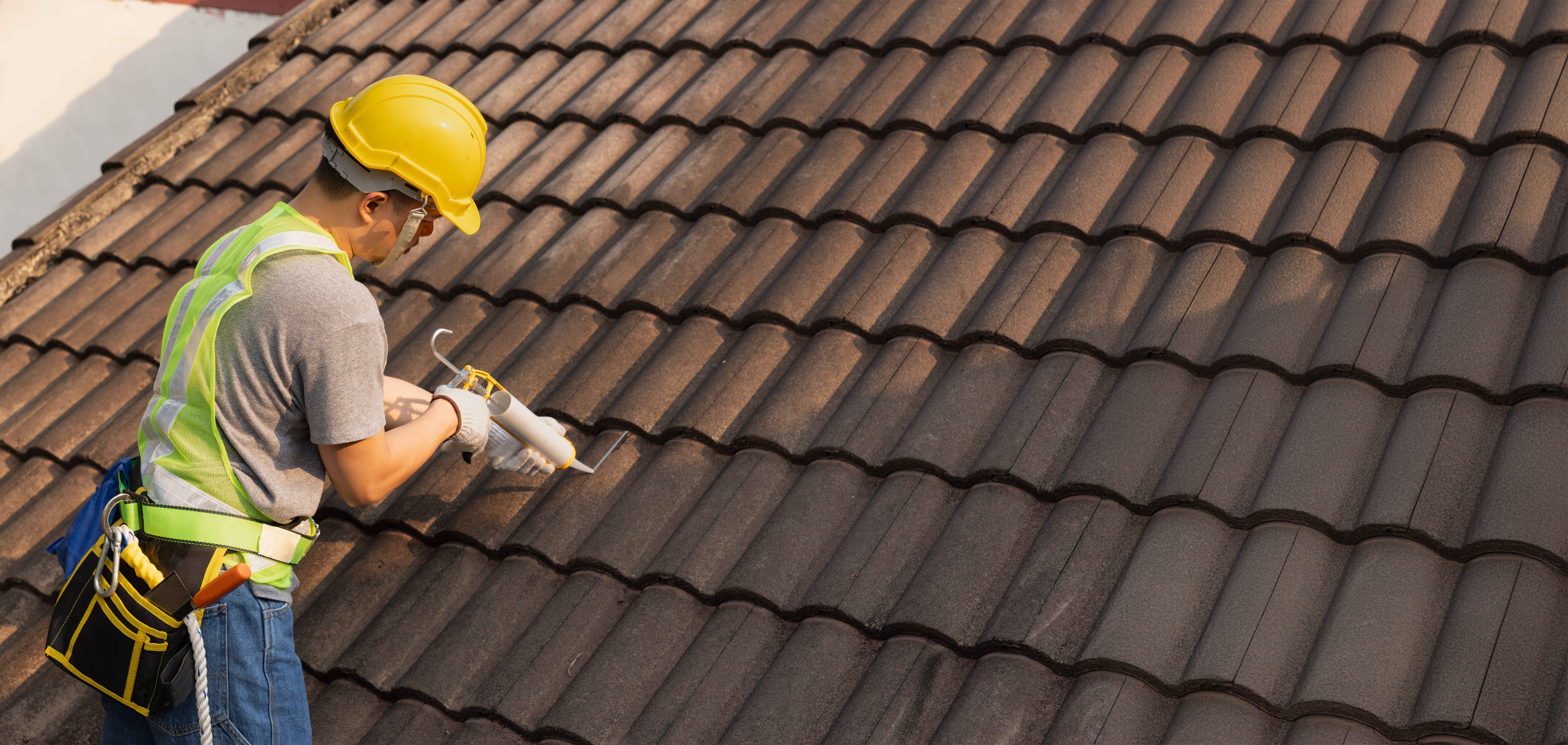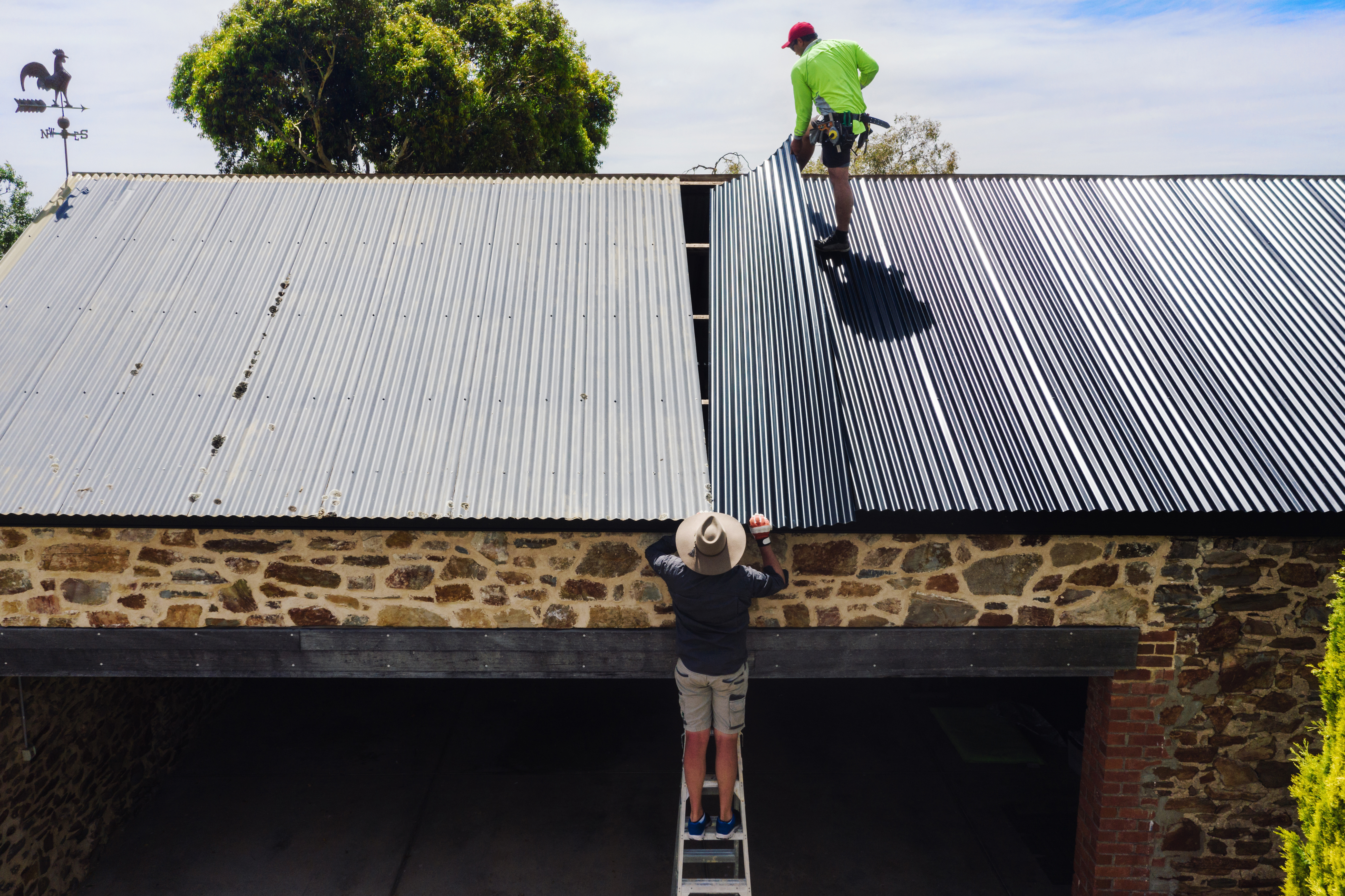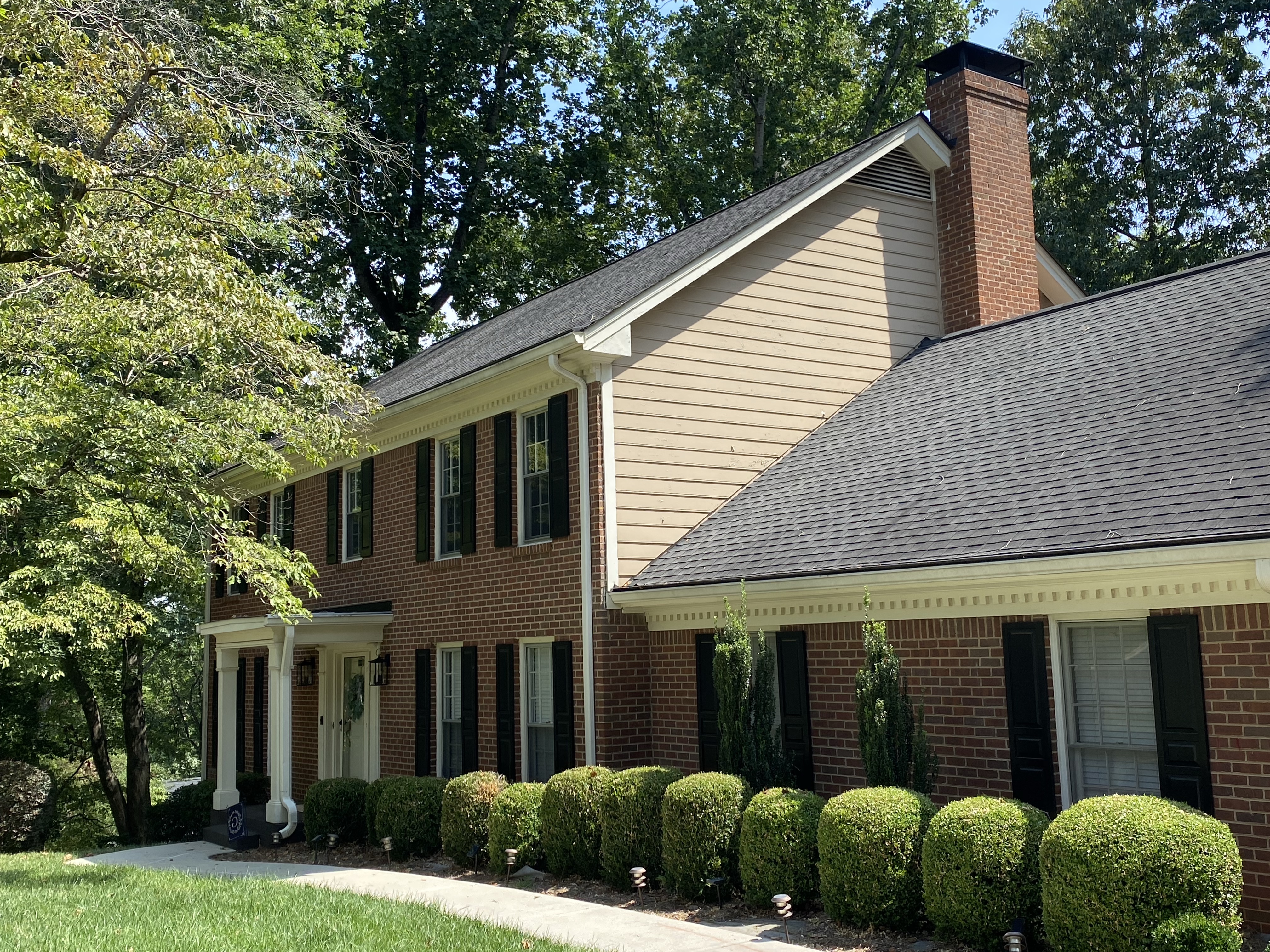
Atlanta’s hot, humid climate can cause various types of roof damage. Learn how much roof repair costs in Atlanta, GA, and what affects how much you’ll pay.


You can often calculate roof square footage without getting onto the roof.
To get an accurate measurement, account for the square footage, the pitch, and the slope.
Different roofs will require different calculations, depending on their shape and features.
Learning how to calculate roof square footage can help you order the correct amount of roofing materials for your project. This roof square footage calculator lets you ensure you won’t fall short or have an excess of materials to return when the project is finished.
The amount of roofing material you’ll need to complete your roofing project depends on the size of your roof and its slope. To calculate the square footage of your roof, you’ll have to measure the length and width of each roof section and then add the totals together to determine the square footage. You’ll also have to calculate the roof's slope and then factor that measurement into the final calculation.
On average, the cost to replace a roof falls between $5,867 and $13,212, with the average cost at $9,515. The final cost will ultimately depend on the roof size, the type of roofing you choose, and the cost of labor to install it. Use the table below to understand how much roofing you may need for your project.
| House Square Feet | Roof Pitch | Eave Extension (Feet) | Total Roof Square Feet | Total Squares of Roofing |
|---|---|---|---|---|
| 1,500 | 6/12 | 1 | 1,872 | 18.72 |
| 1,500 | 7/12 | 1 | 1,939 | 19.39 |
| 2,000 | 6/12 | 1 | 2.461 | 24.61 |
| 2,000 | 7/12 | 1 | 2,548 | 25.48 |
| 2,500 | 7/12 | 2 | 3,424 | 34.24 |
| 2,500 | 8/12 | 2 | 3,555 | 35.55 |
| 3,000 | 6/12 | 1 | 3,628 | 36.28 |
While you can always climb on your roof with a measuring tape to get an exact square footage, it’s much easier to get your calculations from the ground. An approximate square footage is often enough if you’re looking to create a rough budget for a project. Other times, like if you’re building roof trusses or ordering shingles, you might need a more accurate figure. These steps will show you how to measure a roof.
Looking at your home’s square footage is the simplest way to get the approximate square footage of your roof. It’s not going to be totally accurate if your roof is sloped, irregularly shaped, or has some overhang, but it can give you a general idea. To get the square footage:
Measure the length of your home
Measure the width of your home
Multiply the two measurements together
Here’s the formula:
Square Feet = Length x Width
If your home isn’t a perfect rectangle, you’ll need to divide it into geometric areas. Calculate the square footage of each area, then add the numbers together.
Once you know your home’s square footage, you’ll need to know the roof pitch to get the most accurate roofing measurement. The pitch is similar to the slope but not exactly the same. Rather, the pitch is the vertical rise of your roof divided by the horizontal run. In other words, you’re looking at how many inches your roof rises per foot. So, a roof pitch of 5/12 means your roof rises 5 inches for every 12 inches.
You may be able to find your roof pitch on blueprints or building plans. If not, you’ll need to calculate it, which requires climbing onto your roof. Keep in mind that working on a roof is extremely dangerous, and you shouldn’t consider it unless you really, really know what you’re doing. Follow these steps:
Use a measuring tape to mark 12 inches (1 foot) on a large level.
Set a ladder against your roof.
Enlist a helper to hold the ladder steady as you climb it.
Once on your roof, hold your level horizontally and place one edge firmly against the roof’s slope.
Adjust the level so it is level, with the edge still touching the roof.
Find the 12-inch mark you put on the level.
Measure the vertical distance between the 12-inch mark on your level and your roof.
Divide that number by 12.
Here’s the formula:
Pitch = Vertical Distance ÷ 12
For example, if there are 7 inches between your level and your roof, your roof pitch is 7/12.
Unless your roof is totally flat, you’ll need to account for the slope in the roof’s square footage. To do this, you’ll need to use the roof pitch to find a number called a pitch multiplier.
The pitch multiplier depends on the steepness and complexity of your roof. The less severe the slope, the lower the number. Take your roof pitch calculation and use an online roof pitch multiplier table to find the figure. Here are some general figures:
| Roof Pitch | Pitch Multiplier |
|---|---|
| 1/12 | 1.00 |
| 2/12 | 1.014 |
| 3/12 | 1.03 |
| 4/12 | 1.054 |
| 5/12 | 1.08 |
| 6/12 | 1.118 |
| 7/12 | 1.15 |
| 8/12 | 1.202 |
| 9/12 | 1.25 |
| 10/12 | 1.302 |
| 11/12 | 1.35 |
| 12/12 | 1.414 |
| 13/12 | 1.47 |
| 14/12 | 1.537 |
| 15/12 | 1.60 |
| 16/12 | 1.667 |
| 17/12 | 1.73 |
| 18/12 | 1.803 |
| 19/12 | 1.87 |
| 20/12 | 1.944 |
| 21/12 | 2.016 |
| 22/12 | 2.088 |
| 23/12 | 2.162 |
| 24/12 | 2.236 |
The type of roof you have will affect how you calculate your roof’s square footage. Here’s how pitch multipliers vary for some of the most popular roof types.

Gable roofs are one of the most common types of roofs. They consist of two sloped roof panels with two flat sides. For a walkable roof like this, your slope correction number will likely be on the lower side—think 1.3 or below.
With a hip roof, all sides are sloped. You may need to calculate pitches separately if the slopes differ. Expect your pitch multiplier to be around 1.4 or below.
Some roofs are very steep and complex. If you have a steeper-than-average roof, expect your figure to be higher than 1.6.
Once you have the roof pitch multiplier, it’s time to do some math. To get the total square footage of your roof, you’ll need to multiply your home’s total square footage with the pitch multiplier. The formula should look like this:
Home Square Footage x Pitch Multiplier = Roof Square Footage
For example, a 1,000-square-foot home with a 2/12 roof pitch (and 1.014 pitch multiplier) would have a roof measuring around 1,014 square feet. To get the most accurate number, you can split your roof into geometric sections and use this formula on each section.
Whether installing metal roofing, shingles, or composite roofing, you’ll need to calculate the roof square footage. If you don’t want to do it yourself, call a roofer near you to complete the calculations. They’ll understand the nuances between different types of roofing materials and ensure that there is enough material to account for the type of roof and the slope, as well as how to factor in other areas like eaves, vents, and chimneys into the overall calculation.
Ruff Ruff was very professional and was very detailed in what exactly was going to be done on my roof. He explained everything to me step by step.
Spotless Sweeps is wonderful and really cares about their clients. I had a 2 bed 2 bath move out cleaning done for $180. Great results for a great price!
I cannot say enough to properly express my satisfaction in working with Golden Master. I have a property that I cannot easily access. They went to the place, made an assessment, and performed the work perfectly. The fees were competitive. Later, the house had a different problem. They came...
Allan gave a proper detailed estimate with all items explained thoroughly. The team that installed the new roof were as professional as Allan told me they would be. Well done to Allan and the THR team.
I used Top Roof to repair our leaky shingle roof and had a great experience with them. Top Roof and his team were very nice to deal with, performed quality work in a timely fashion, and at a very competitive price. I appreciate as a customer. I would call again for any roofing needs and...
Did some repairs to the roof. The roof had some water damage. He did a great job. The price was reasonable. He was easy to work with. He does a really good job. If I have any other work, I call him. They clean up after themselves really well.
I couldn't have been more pleased with the work performed by ACR Group. Jim, his brother Michael and crew were fantastic! They did a great job. The debris from the repairs and cleaning of the gutters was nowhere to be seen. Every day the site was as clean as when they arrived and the final...
From average costs to expert advice, get all the answers you need to get your job done.

Atlanta’s hot, humid climate can cause various types of roof damage. Learn how much roof repair costs in Atlanta, GA, and what affects how much you’ll pay.

Metal roofs stand up better to severe weather than asphalt shingles. See how much a metal roof costs in Atlanta to see if this upgrade is within your budget.

A new roof boosts curb appeal and home value and sets you up for decades of home protection. Learn about roof replacement costs in Atlanta to set your budget.

Not sure if you need a new roof yet? Check out these warning signs that you need a new roof to catch roof problems early.

Sharpen your skills and smooth your cuts with this DIY guide to cutting metal roofing. We cover everything from measurements and safety gear to which tools will give you the cleanest cut.

Dreaming of a tile roof but not in love with how expensive clay tiles are? Concrete tile roof costs are much lower, but you still get that classic look.